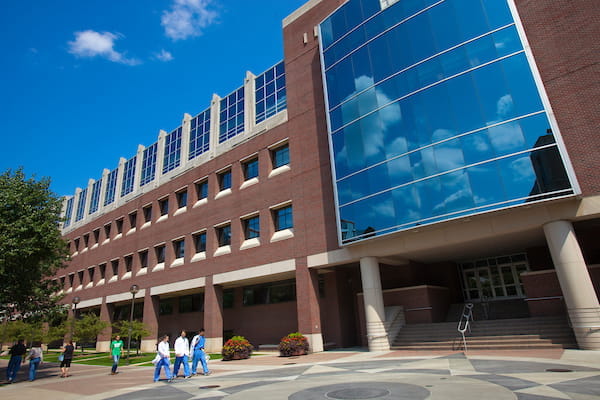Indiana University School of Medicine offers a nationally recognized, fully accredited four-year medical education program leading to a Doctor of Medicine (MD) degree. The MD program at IU School of Medicine is the largest undergraduate medical education program in the United States. With nine campuses and strong partnerships with teaching hospitals throughout the state, the school offers unparalleled opportunities and resources for students to explore their interests and pursue specialty training to prepare for successful careers. After students complete this phase of medical education, they often match to highly desirable residency programs — either at IU School of Medicine or other competitive medical schools — to continue training.
Applying basic science to patient care

Strong Emphasis on Clinical Training
The four years of medical school are divided into three phases. The first two years focus on the basic sciences with clinical integration; the third- and fourth-years are devoted solely to clinical experiences with emphasis on specialty training for career placement in the fourth year. Required third-year clerkships include eight-week rotations in Internal Medicine, Pediatrics and Surgery; four-week rotations in Family Medicine, Neurology, OB/Gyn and Psychiatry; and a two-week rotation in Anesthesia. One four-week vacation and a two-week vacation are built into the third-year schedule. Fourth year electives provide students the flexibility to pursue focused training in specific areas of medicine. Indiana University School of Medicine partners with 42 hospitals statewide to provide a wide variety of patient care experiences in ambulatory and inpatient settings. Most clerkships statewide have 1:1 student-to-preceptor ratio.
IU School of Medicine completed extensive curriculum reform to place additional emphasis on early clinical exposure and uniformity of the curriculum across all nine IU School of Medicine campuses. The school’s long-standing partnership with the state’s largest health system (IU Health) as well as many other teaching hospitals throughout the state, enables medical students to rotate through diverse clinical environments.
Medical Student Resources
Nine Statewide Campuses
IU School of Medicine is located across nine campuses in Indiana. Fundamental aspects of the school’s MD curriculum — including teaching modalities, integrated courses, faculty expertise in clinical and basic sciences, and block scheduling — are available to students on all campuses, but each campus offers a unique experience that comes with interacting with the community and participating in the local clinical setting. So while students in Gary gain experience in caring for low-income patients in an urban environment, students in Terre Haute learn the specific challenges and needs of serving a rural patient population. The Bloomington campus focuses on medical education, and students in Muncie receive especially strong exposure to primary care.
The special amenities of each location benefit medical students in many different ways, and some students experience multiple campuses during their medical education training. MD students participate in clinical rotations at hospitals and physician offices throughout the state during the third and fourth years of medical school.






